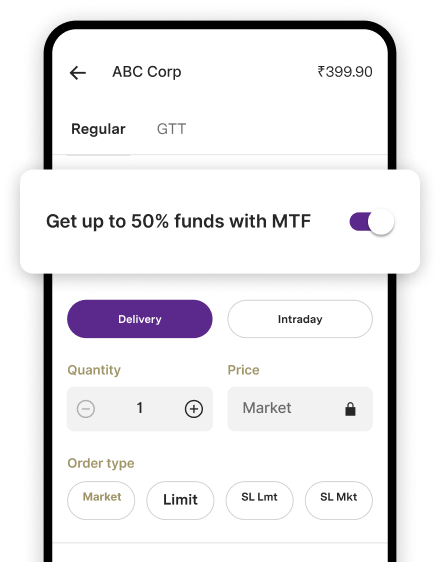GPF rules
Retirement planning constitutes an integral part of financial planning. Planning for retirement does not only ensure that your funds get sorted post-retirement but also ensures you fulfill your dreams, such as travelling around the world.
Today, we are going to focus on the General Provident Fund and its various rules you must know before subscribing to the scheme.
In this blog, we will cover the following:
What is a General Provident Fund?
A General Provident Fund(GPF) is a fund specifically designed to plan for retirement for government employees.
Like all other schemes or funds, a certain sum amount or percentage of salary is deducted and contributed towards the fund. Post-retirement, the accumulated funds are reimbursed to retired employees.
What are GPF rules?
The government of India has enforced specific rules regarding the various aspects of the saving scheme to make sure everything is clear. Let's learn about the various rules of the scheme.
Eligibility criteria for GPF
Generally, only government employees are eligible for the scheme. However, anyone who fulfils the below-mentioned criteria(s) is eligible to contribute towards the fund.
-
All temporary government employees who have performed their service for a year or more.
-
All permanent government employees who are residents of India
-
All re-employed pensioners (other than those eligible for admission to the Contributory Provident Fund)
Not eligible: Private sector employees are not eligible to contribute towards the scheme. They can opt for PPF schemes instead.
Nomination rule
Subscribers to the fund can declare a nominee at the time of subscribing to the fund. The nomination rule elaborates that the nominee should be a subscriber's family member.
In case of more than one nominee, subscribers shall specify the share payable to each nominee.
GPF rules: Deposits
In GPF, there are certain rules for how a subscriber can make deposits towards the fund. Let's have a look at them.
Minimum amount: Subscribers to the fund need to contribute at least 6% of their total income.
Maximum amount: Subscribers to the fund are not allowed to contribute any amount exceeding their total income.
Frequency of contribution: Monthly contributions need to be made except during the period an employee is under suspension.
GPF interest rate rules
GPF interest rules cover the interest aspect of the saving scheme. The government of India fixes the interest on amounts credited (or GPF balance). The government sets an interest rate for every quarter.
For the quarter from 01 January 2023 to 31 March 2023, the interest rate was 7.1% per annum.
GPF withdrawals rules
GPF rules for withdrawal are different under different circumstances. Let's have a look at each one of them.
Primary criteria
As per GPF rules, individuals wanting to withdraw their funds must have completed at least ten years of service in their field.
-
For education, marriage, or to fund dependents/family members' needs, you can withdraw up to 75% of the outstanding balance in the PF account
-
In case of medical crises for yourself or your family members, subscribers can withdraw up to 90% of their PF account balance. The amount will be made available within seven days.
-
If you want to finance a house, purchase land to construct a house, renovate your home, reconstruct ancestral property, or repay a home loan, you can withdraw up to 75% of the balance in the PF account.
-
You can also withdraw funds if you wish to buy a vehicle, repair it or repay a car loan. If you are planning to specifically buy a vehicle, the maximum you can withdraw is either three-fourths of the vehicle value or 75% of the PF balance, whichever is lower.
-
You can also withdraw funds to buy home appliances such as air conditioners and washing machines. The only condition is you have to use funds for the purpose you mentioned and not otherwise.
-
Without giving any solid reason, you can withdraw up to 90% of your funds or the balance amount before two years of retirement.
-
If the subscriber dies, the nominee is eligible to redeem the outstanding amount in the PF account. If the subscriber to the fund has been performing his service for at least five years, the nominee is eligible for an additional amount as well. This amount can be calculated as the average of 3 years of PF balance preceding the event of death. The amount must not exceed ₹60,000.
-
The subscriber is eligible for 100% of the PF balance at retirement or superannuation.
GPF advance rules
GPF subscribers are eligible to get three months of advance pay or half of the PF account balance, whichever is lower.
Subscribers are eligible for advance for various purposes such as funding education, marriage, medical emergencies, buying ACs, and washing machines, and fulfilling the expenses of legal proceedings against you or members.
The advance needs to be paid back within 12 - 24 months in equal installments. The loan tenure can be up to 36 months if the advance payment exceeds three months' pay.
GPF taxation rules
Many government employees prefer saving their funds towards GPF because of the tax benefits. Monthly contributions, accrued interest and returns from the PF account are exempted from taxation under the Section 80C.
Conclusion
Planning for retirement is crucial and should be addressed at any cost. The general provident fund allows salaried individuals across various government sectors to prepare for their retirement.
In this blog, we talked about eligibility rules, nomination rules, deposit rules, interest rules, GPF rules for withdrawals, advance rules and taxation rules.
Being a government employee, you should be aware of these rules so that you don't break them unintentionally.

